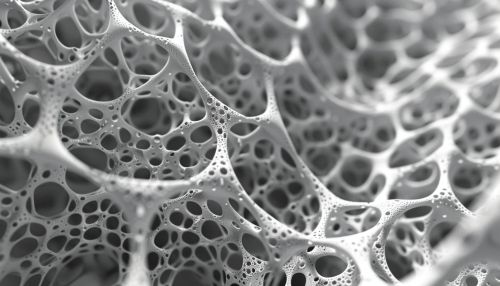Spin foam
Introduction
Spin foam is a concept in quantum gravity, which is a theoretical framework that attempts to reconcile the principles of quantum mechanics and general relativity. The theory of spin foam aims to provide a description of the quantum structure of space-time. It is an extension of the loop quantum gravity (LQG) theory, and it is also related to the path integral formulation of quantum mechanics.


Background
The term "spin foam" was coined to describe the quantum states of space-time in the LQG theory. The concept was first introduced by Roger Penrose in the 1970s, and it has been developed further by many other researchers since then. The spin foam model is a way to visualize the quantum states of space-time, where each state is represented by a foam-like structure of interconnected nodes and edges.
Theoretical Framework
The spin foam model is based on the idea of a quantum state of space-time. In this model, space-time is not a continuous entity, but rather a collection of discrete quantum states. Each quantum state is represented by a spin network, which is a graph where each node represents a quantum of volume and each edge represents a quantum of area. The spin foam is then a collection of these spin networks, which evolve over time.
The spin foam model is a kind of path integral formulation of quantum gravity. In this formulation, the probability amplitude for a certain quantum state of space-time is given by a sum over all possible histories of the spin foam, each weighted by a phase factor that depends on the action of the history.
Spin Foam Models
There are several different spin foam models, each with its own specific rules for the evolution of the spin networks. The most well-known spin foam model is the Barrett-Crane model, which is based on the principles of general relativity and quantum mechanics. Other spin foam models include the Freidel-Krasnov model, the Perez-Rovelli model, and the Engle-Pereira-Rovelli-Livine (EPRL) model.
Each spin foam model has its own specific rules for the evolution of the spin networks, which are determined by the dynamics of the theory. These rules are usually expressed in terms of a spin foam vertex amplitude, which is a mathematical function that assigns a complex number to each vertex of the spin foam.
Applications and Implications
The spin foam model has several potential applications in theoretical physics. One of the most important applications is in the field of quantum gravity, where the spin foam model provides a possible solution to the problem of quantum gravity. The spin foam model is also relevant to the study of black holes, cosmology, and quantum field theory.
The spin foam model also has several important implications for our understanding of the nature of space-time. According to the spin foam model, space-time is not a continuous entity, but rather a collection of discrete quantum states. This implies that space-time has a fundamentally quantum nature, which is a radical departure from the classical view of space-time as a smooth and continuous entity.
Criticisms and Challenges
Despite its potential applications and implications, the spin foam model also faces several criticisms and challenges. One of the main criticisms is that the spin foam model is still a speculative theory, and it has not yet been confirmed by experimental evidence. Another criticism is that the spin foam model is mathematically complex and difficult to understand, which makes it less accessible to many researchers.
One of the main challenges for the spin foam model is to make predictions that can be tested by experiments. So far, the spin foam model has not made any clear predictions that can be tested by current experimental techniques. However, researchers are actively working on this problem, and there are several proposals for possible experimental tests of the spin foam model.
